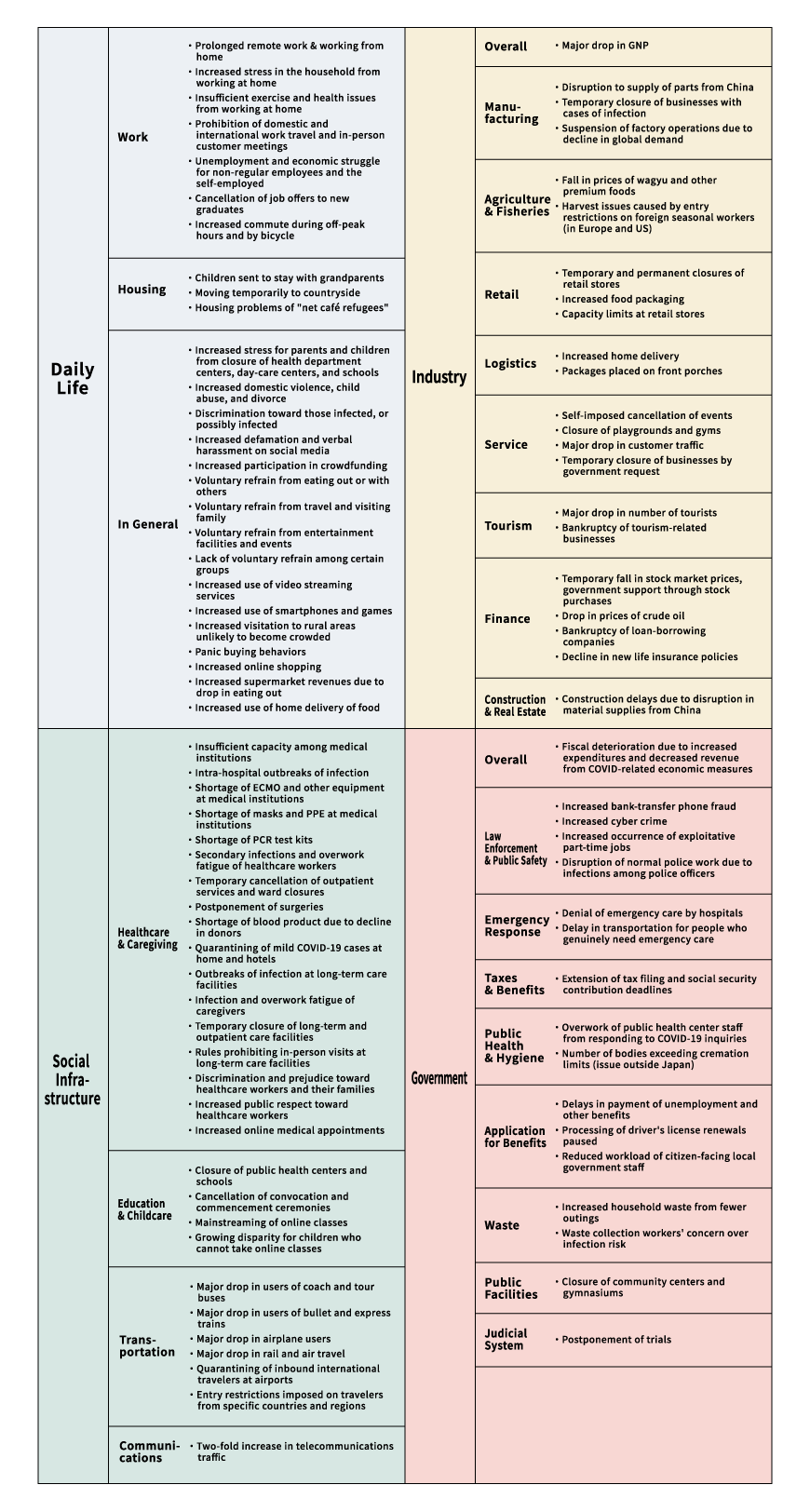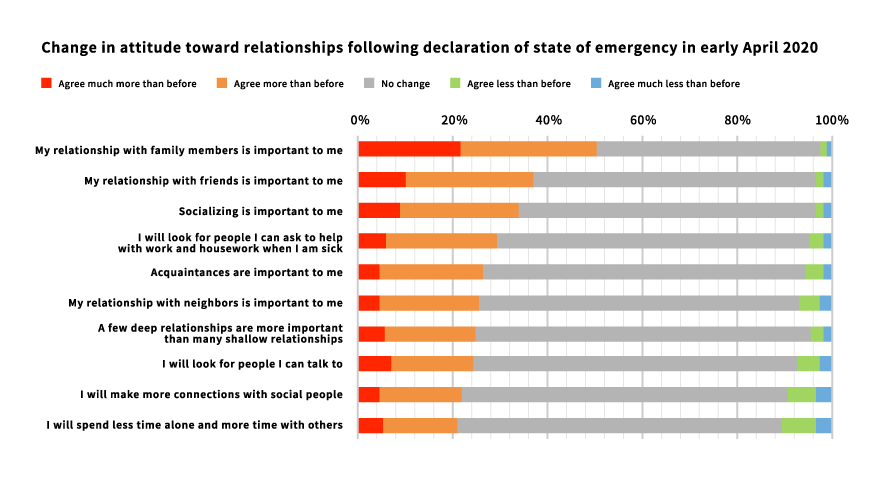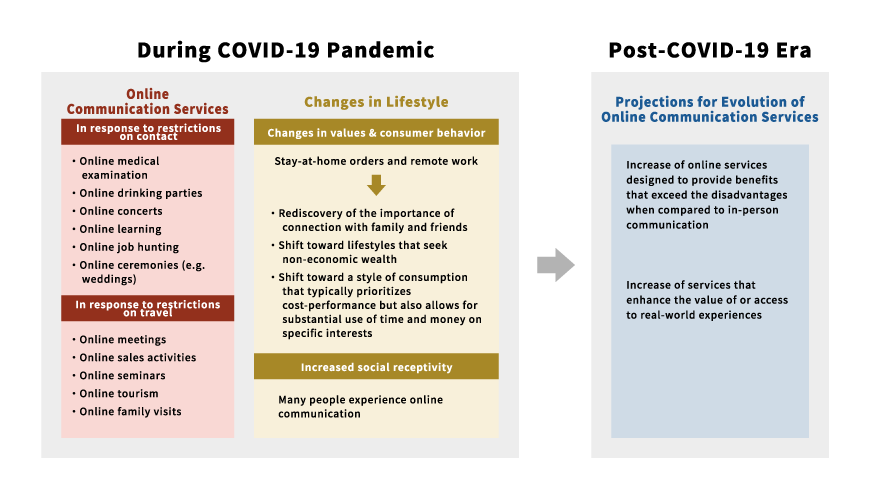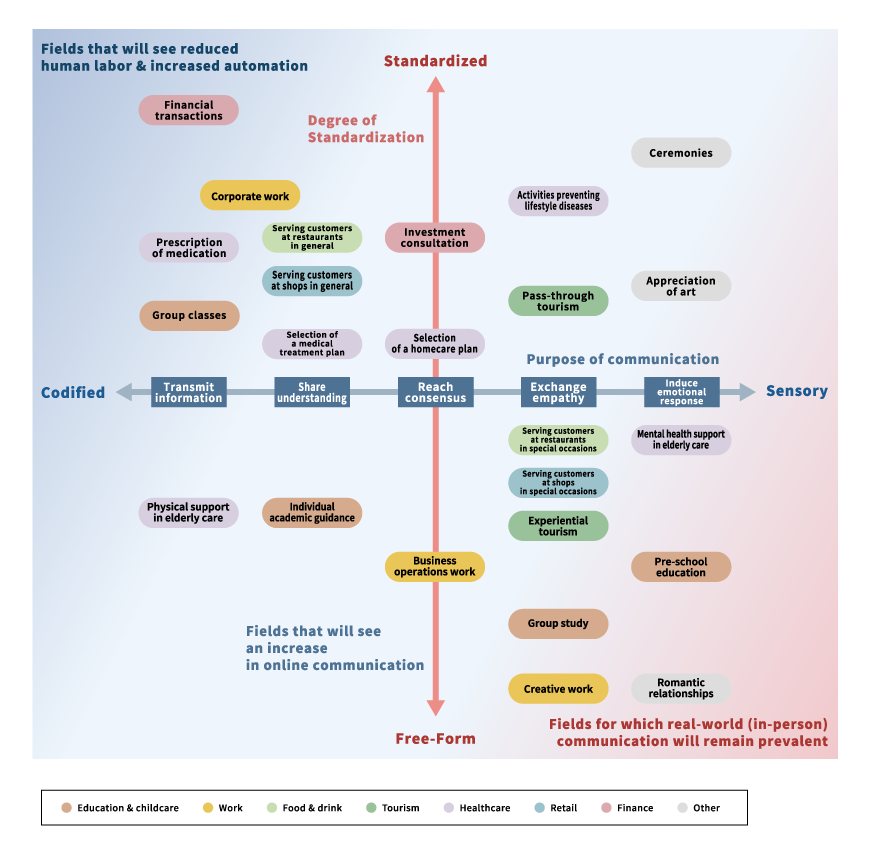
How Online Communication will Evolve in the Post-COVID-19 Era
Society More Receptive to Online Communication
Societal Changes Stemming from COVID-19 Pandemic
COVID-19 has triggered an array of new social phenomena worldwide in the six months since its outbreak. These effects extend far beyond the medical field permeating into daily life, industry, infrastructure, government, and beyond (Figure 1).
Social Phenomena Stemming from the COVID-19 Pandemic

Source: Mitsubishi Research Institute, Inc.
The general public has limited commuting for work, school, unurgent outings, and inessential outings due to restrictions placed on interpersonal contact and travel taken to prevent the spread of infections. This drop in movement has had an enormous impact on the service industry, where in-person interactions are common, with a subsequent rippling effect on all industries.
In addition, the physical transformation of daily life has driven changes in lifestyle and values, and these changes are expected to continue into the post-COVID-19 era (Figure 2).
Changes in Relationships in Japan during the COVID-19 Pandemic

Source: Based on a Consumer Market Forecast & Intelligence System (mif) questionnaire survey by Mitsubishi Research Institute (July 2020)
Growing Demand for Online Communication due to Pandemic
The COVID-19 pandemic created a dilemma in which human connection was sought after only to face denial due to restricted behavior—in-person conversation was off the table and workers prevented from properly offering their services to customers. People have turned toward the online realm to fill this communicational void. Digital natives were not the only ones to swiftly take to online communication—seniors too, for example, made a rapid shift to the digital citing the analog interface of videophones as easy to use. Even after the pandemic, communications will settle down on a hybrid form that merges the real and digital worlds.
Online communication will evolve to meet two types of demand going forward. The first is the demand for online communication services designed to provide advantages that more than compensate for the disadvantages of communicating in a virtual medium. The second is the demand for online communication services that enhance the value of or access to real-world experience in fields that depend on the inherent value of a particular location, space, or environment (Figure 3)
Trends Facing Online Communication in Post-COVID-19 Era

Source: Mitsubishi Research Institute, Inc.
Fields Projected for Post-COVID-19 Evolution in Online Communication
People communicate in various settings and with various purposes. The purpose of communication can range from the highly codified, such as to transmit information or reach a shared understanding, to the highly sensory, such as to induce an emotional response or to exchange empathy. Also, the content communicated can range from standardized to free-form expression (Figure 4).
Setting & Evolutionary Trajectory of Communication by Field

Source: Mitsubishi Research Institute, Inc.
In codified and standardized settings of communication, processes will see a reduction in human labor and an increase in automation as AI and robots replace the people customers talk to. However, in sensory, free-form settings of communication, in-person communication will likely remain in the future. Domains situated in settings between these two extremes are likely to see a continual shift toward online communication going forward.
Evolution of Communication Technology
Currently, online communications are based on the transmission of voice and image data. In the years ahead, communication support functions are expected to spread. These functions will use AI to facilitate conversation by analyzing the intentions and emotional state of the parties involved based on information such as speech content, facial expressions, and hand gestures. Real and virtual worlds will merge, allowing users to convey sensory information to each other, such as touch, taste, smell, and physical sensations. Such technologies are poised for rapid uptake and will become part of mainstream online communication in the post-COVID-19 era.
Part 2 of this series examines the technologies that will drive the online communication evolution. Part 3 provide an overview of how online communication will transform retail and finance, and Part 4 will explore the accompanying evolution of workstyles.
